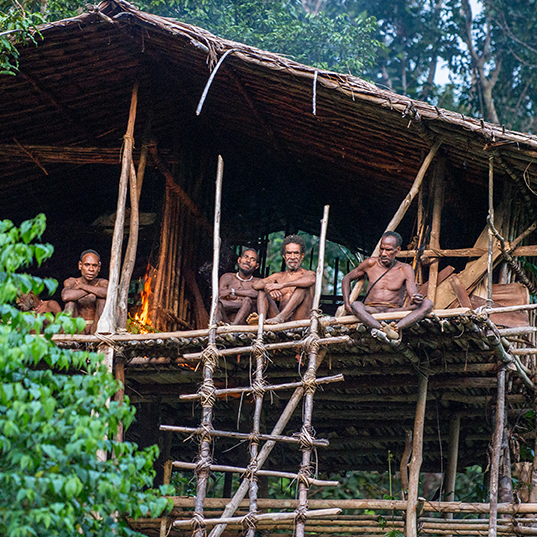The very idea of explaining how tribes live without contact with civilization is a paradox in itself, given It is difficult to transmit what one doesn’t know. It is estimated that hundreds of isolated indigenous communities exist on the planet: in Latin America, especially Amazonia, and regions of the Pacific and Indian Oceans. In most cases, it is they who quite deliberately do not want to be found. Also, the protection of indigenous tribes is a way to ensure the Sustainable Development Goals in 2030 Agenda.
Unique beliefs and a common lifestyle
The organization Survival works for the rights of indigenous peoples and, thanks to their efforts, we are able to know how the planet’s tribal communities live. Most of these tribes shelter in forests with difficult access and live primitively, with tools made from bone and stones, without any knowledge of metallurgy. The Sentinelese are probably the most isolated tribe we know of so far. With around 40 members, they live on a remote Indian island in the Andaman Sea, part of the Indian Ocean. They warn off strangers by firing arrows and the Government has prohibited access to the island to protect them from snoopers.

If we do manage to observe any of these communities, however, we discover the unique ancestral customs and beliefs that form their identities. The Korowai, aborigines of Papua New Guinea, for instance, live in wooden houses in the trees, believing that their world might be destroyed by an earthquake if they change their ancestral customs.
For their part, the Huli Wigmen, also of Papua New Guinea, as their name indicates wear huge wigs, made from natural hair, and paint their faces with yellow clay. They carry an axe with claws to frighten their rivals. Men and women, although married, live in different homes and it is suspected that women’s menstruation is blamed for disease and ageing.
The long sunset of the lone walker
These are just some examples of indigenous idiosyncrasies. But perhaps the best known and most surprising case, illustrating these communities’ reality, is that of the Man of the Hole. This Amazonian Indian would appear to be the last member of his community and has remained alone in his territory for years now. Used to digging large holes to hunt animals or hide (hence his name), he lives in a small straw house and has a vegetable garden that he visits at night to gather his provisions without being seen.
Indigenous peoples and the SDGs
The protection of Indigenous Peoples is a matter that not only benefits them but also the planet. They are the best defense against deforestation, they protect the forests and their biodiversity, prevent species from disappearing, and care for nature as if it were part of themselves, since they need it to survive.
Indeed, the 2030 Agenda has a serious challenge to overcome. Although the 17 Sustainable Development Goals are important for Indigenous Peoples, only 4 indicators mention them specifically, so there is lots of work ahead if the reality of these communities is to be better reflected.
Sources: El País, National Geographic, Survival, Cultural Survival, Hipertextual